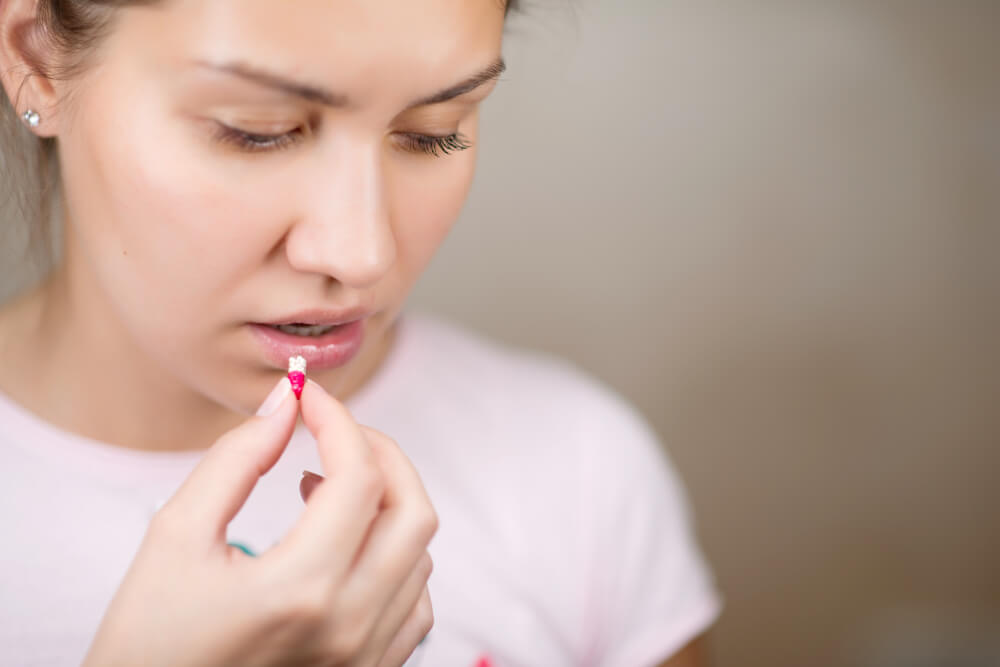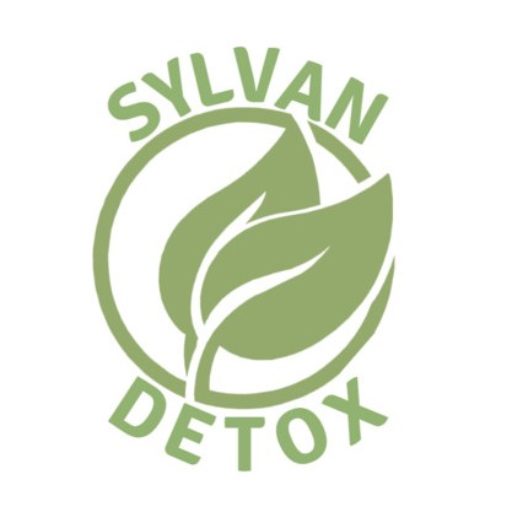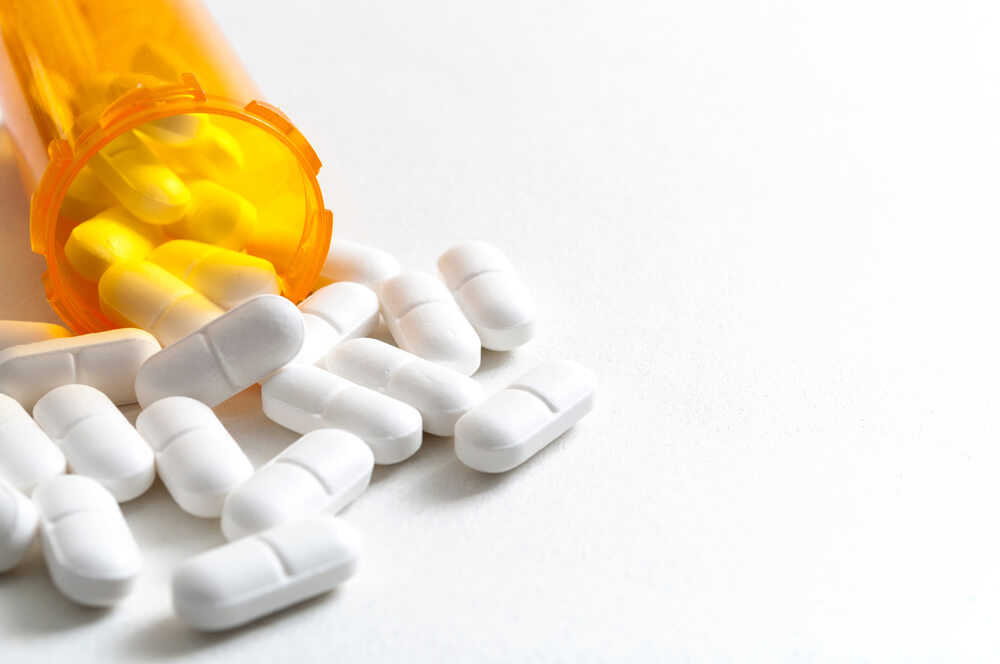Worried about whether you or someone you love is addicted to opiates? Some opioid addiction symptoms are more subtle, and others are easier to see. What many people don’t realize is how easy it is to have an opioid use disorder, because they’re highly addictive drugs.
The word opiates apply to naturally sourced drugs such as heroin, morphine, and codeine. In contrast, the term opioids are used to describe all these types of drugs, including fentanyl, hydrocodone, oxycodone, hydromorphone, oxymorphone, and methadone. Whether the drugs are made in the lab or occur naturally, they are all addictive whether prescribed or not.
Opiates are derived from the poppy plant. (That’s why, on occasion, people who don’t use opiates might still fail a drug test from eating a poppy seed bagel.) It’s a class of drugs that is used to relieve pain, so although some opioids such as heroin are illegal, others are found in prescription medications.
These drugs bind with opioid receptors inside your brain, which dulls any pain you might be feeling. Your brain also releases chemicals (endorphins) that feel pleasurable. They are very effective, yet not everyone exposed to opioids will end up with an addiction. But the longer you use them, the more likely you will depend on them.
Millions of Americans suffer from some kind of substance use disorder, and it’s estimated that about 10% of opioid users will develop an addiction to them. So if you or your loved one is dependent on drugs, you’re not alone. The good news is that you can be successful in kicking the habit and getting clean, just as millions of others have. Due to the nature of opioids, most of the people who are addicted need help to stop.
If you or a loved one is suffering from any form of addiction or abuse, please call Sylvan Detox at (818) 308-3099.
How is Opioid Addiction Defined?
One of the major opioid addiction symptoms is a powerful craving for the drug. This can happen if you’ve been taking them from a doctor’s prescription or from using them illegally. When you’re not actively using them, you have a strong compulsion to get more.

The more you use, the more you need to use to get the same effects. You build up a tolerance for opioids and your brain demands more in order to release the pleasurable feelings and dull the pain. Your brain stops making its natural endorphins when it “knows” it’s going to get a fix of opioids. Once you’ve built up enough of a tolerance, then you become dependent on the drugs. Your life may begin to revolve around using entirely so that all your time is consumed either by finding or getting the drugs.
They’re even more problematic when you change the way that you take them. For example, some are intended to be time-released, so that when you take prescription opioids in pill form, the medicine is slowly released into your bloodstream. However, if you crush the pill instead and snort or inject it, all the medicine hits your bloodstream at once and creates a more intense high – that you get hooked on.
After you’ve developed a dependence, once you don’t have the drug in your body you might start going through withdrawals. Your brain is at a chemical imbalance when you stop giving it opioids, and it takes some time to start making endorphins and balance itself again. The imbalance is what leads to withdrawal symptoms.
The symptoms normally start within 6 to 12 hours after your last use. The early ones can be uncomfortable but not dangerous and include watery eyes, anxiety, heavy sweating, a fever, muscle aches, runny nose, and insomnia. Plus, you might have temperature swings as well as mood swings, and have a hard time concentrating.
The toughest time for opioid withdrawal, known as peak withdrawal, is normally three to four days after your last dose. If you’re not in a rehab undergoing a safe medical detox, this is the most likely time that you’ll start using again just to end the pain of withdrawals. In this part of the withdrawal timeline, you may experience dilated (large) pupils, diarrhea, depression, goosebumps, nausea, stomach cramps, vomiting, and serious cravings for the drug. After this stage typically the withdrawal symptoms are less severe, and most of them will resolve within a week.
The severity of withdrawal is why many opioid users need to go to detox and rehab to treat their substance use disorder. Even after detox, you may find yourself having cravings for the drug. If you don’t have support from therapists and a clean and sober community, you might be tempted to relapse and start using again.
It’s unfortunately also very common for opioid users to overdose on this category of drugs. One of the side effects of these drugs is that you feel sleepy, but if you take too much, your breathing and heart rate can slow down to the point where either or both stop entirely.
Overdosing is also pretty common when you mix them with other drugs, especially “benzos” (benzodiazepines) such as Valium and Xanax. These drugs, like opiates, are depressants rather than stimulants. Taking two depressant drugs at the same time or within a few hours of each other makes the effects of each worse.
Another reason that opioid overdoses happen so often is that when you buy them off the street, they may be “cut” with poisonous substances or toxins that can kill you or at least make you very sick. Accidental overdoses may also occur when opioid users who are familiar with one drug take another one not realizing that it’s more potent. Fentanyl, for example, is 50 times more potent than heroin and 100x compared to morphine. If you used fentanyl at the same dosage that you took heroin, you could be in serious trouble.
Who is at Risk for Opioid Addiction?
There are many environmental factors that can predispose someone to be addicted to opioids once they start taking them. In addition, some genetic factors play a role in opioid addiction.
- Smokes (tobacco) a lot
Nicotine, the addictive substance in cigarettes, has similar effects in the brain as opioids. About three-quarters or more of the population who are addicted to opiates also smoke. The two drugs enhance the effects of each other and make it easier to be addicted to both.
- Age is in the teens or early 20s
In general, anyone in this age group is more likely to abuse substances of any kind compared to older people. Their brains are still forming, and they’re more likely to experiment and take risks without thinking about or being aware of the consequences.
- Enjoys taking risks and seeks thrills
Some people are hardwired for risk-taking behavior, no matter their age. This doesn’t always have to be a terrible thing – big wave surfers, Olympic-level athletes in skiing, snowboarding, and the like are also thrill-seekers. But when it’s aimed at drug taking, you can easily end up with addiction issues.
- Has a family history of substance abuse, or has abused drugs in the past
It’s long been known that addiction has a genetic component because you can see it throughout family generations. Anyone who’s abused drugs in the past is at a higher risk as well.
- Has a history of legal issues such as DUIs
Poor coping skills and not being able to think about consequences are tied both to legal problems and to substance abuse.
- Experiences problems with work, school, family, and/or friends
If you’re having a hard time dealing with the people around you, then you don’t have a strong community to help you avoid using. (Community is a huge factor in getting clean, and rehabs and recovery groups play a big role.) In addition, if you feel like you don’t have any friends and your coping mechanisms aren’t healthy, you’re more likely to try to ease the pain with opioids or other substances.
- Lives in a high-stress environment, such as living below the poverty line or being unemployed
Stress is a contributor to many kinds of substance abuse. It’s hard to figure out how you can get out of the situation, so you might turn to substances so you don’t have to deal with the stress.
- Experiences or has experienced serious depression or anxiety
Self-medication is common among those with mental health disorders, and opioids literally release the pain. Similarly, as with high-stress environments, those with severe depression and/or anxiety can’t see a way out of their situation. They try to ease the symptoms with drugs that they know will help them feel better.
- Has contact with substance abusers
It’s hard to get illegal drugs if you don’t know where to get them! But if you’re in an environment where others have easy access to drugs, then it’s a lot easier for you to start and then continue using.
While this list is extensive, it’s important to know that anyone can develop an addiction to these drugs, whether prescribed or not. If some of the factors above apply to you, you have an increased risk compared to someone where they don’t apply. However, someone without any of these risk factors can also develop an addiction.
20 Symptoms of Opioid Addiction
If you’re not entirely sure that you (or your loved one) are addicted to opioids, see if you’re experiencing any of the following symptoms. You might not be displaying all of them, but if you’ve developed a substance use disorder with opioids, you’ll probably see some of the signals below in your life.
Some symptoms may vary a little bit between different types of opioids specifically, but many are common to opioid drugs in general.
Physically, you may experience some or all of the following:
- Personal appearance changes, typically weight loss and lack of basic grooming
- Uncoordinated movement
- Nausea and vomiting
- Pinpoint pupils
- Scabs, puncture wounds (especially for those who inject drugs), and sores
Mentally (cognitively), look out for:
- Having a hard time concentrating
- Feeling separated from the world around you
- Thinking more slowly
- Not being able to solve problems or having bad judgment
In terms of emotions, some opioid addiction signs include:
- Mood swings
- Lashing out suddenly at others
- Depression
- Irritability or agitation
- Paranoia
Behavioral changes you might see are:
- Suddenly doing badly at work or school
- “Doctor shopping” to get more than one prescription for opioid meds
- Stealing other people’s medicines
- Lying about how much pain you’re in so you can get more drugs
- Isolating yourself from your family members and non-drug-using friends
- Being away from home, school, or work for unexplained reasons
If any of these is familiar to you, either because you’re experiencing them or your loved one is and you’ve suspected them of substance use disorder, it’s time to get help.
Who Should Seek Help for Opioid Addiction?
Because some of the withdrawal consequences lead to potentially life-threatening results when you stop using, you should get help if you’re experiencing any of the opioid addiction symptoms above. While some substances don’t require detox and rehab to recover and get clean, the nature of opioids means that you likely need to go through a supervised medical detox first before you go to treatment.
For one thing, intense cravings are a known symptom of opioid withdrawal. If you try to go through it on your own, you may find you end up using it again because the withdrawal is so painful, and that defeats the purpose. More importantly, it can be dangerous to try to stop using it all at once. A gradual taper to ease off the drugs is a better plan for most people, and it’s very difficult for you to set that up for yourself. However, clinical staff at rehab have experience and knowledge to help you work through it.
Finally, withdrawal symptoms can vary from mild to moderate to severe and back again in the blink of an eye. Medical detox will monitor you 24/7 and try to prevent life-threatening symptoms in the first place. But if they do arise, the staff is there to take care of you immediately.
After detox, you’ll be ready for treatment, typically inpatient rehab to start with. It’s also likely that once you’ve gone through the inpatient program, you’ll have the recommendation to follow up with outpatient care. With this type of rehab, you no longer live in the facility, but go home at the end of the day or to sober living. More intensive types of outpatient treatment occur during the day most days of the week. Then you can move down to the next level of care, where you attend therapy and classes at night and on the weekends.
Throughout your stay in rehab, you’ll have a safe, trigger-free environment to establish your sobriety. Not only will you understand what led to your addiction, but you’ll also discover alternate methods of coping with stress. You’ll be surrounded by a community that’s suffering through the same situation that you are in, and you and your peers can learn from each other.
Once you transition out of rehab, you’ll have a sober community to support you. You may go to 12-step or other recovery meetings and continue with therapy as appropriate. In addition, especially if your home life is not conducive to getting and staying clean, you may want to spend some time in a sober living facility so you can continue to work on positive behaviors.
Substance abuse treatment teaches you life skills so that your life is more manageable, which reduces the need to “get away from it all” with drugs and alcohol. The therapy will help you develop healthy habits and routines that you can rely on once you’ve transitioned out of treatment. The goal of treatment is for you to be successful in staying clean for the long term and after rehab.
If you have a co-occurring mental health disorder, you’ll receive care for that too when you get help for your addiction. Dual diagnosis is very common in rehab, and addicts frequently enter with depression, ADHD, bipolar disorder, borderline personality disorder, and schizophrenia. You have to be clean first before you can be treated for any mental health issues. You may have a co-occurring disorder without realizing it and be diagnosed in rehab.
Overcome Opioid Addiction with Help from Sylvan Detox
Looking for a comfortable, modern facility to get help treating your opioid addiction symptoms and get clean? Sylvan Detox provides luxury accommodations with security and staff around the clock so you feel safe the whole time you’re here.
In addition to medication-assisted treatment and behavioral therapy, we also provide alternatives to help you manage stress, such as yoga, massages, sound therapy, and more. Our caring staff is dedicated to helping you build the new life you’ve been dreaming of and deserve. Don’t wait any longer to free yourself from the chains of opioid addiction.

